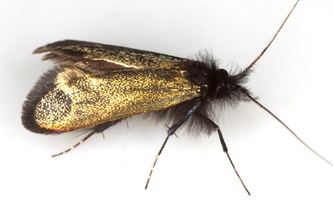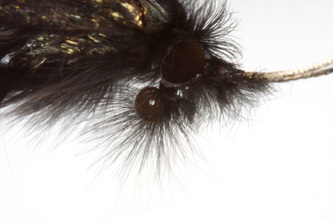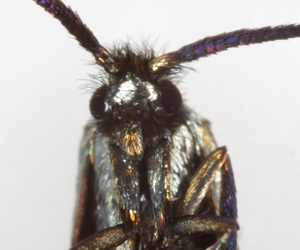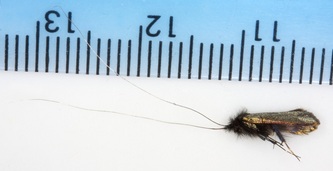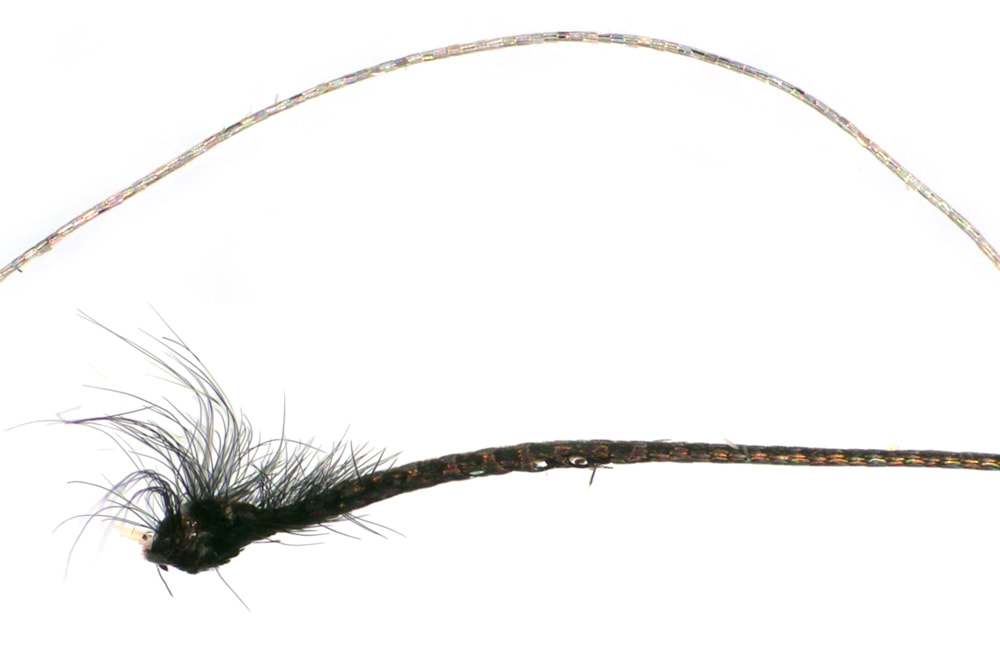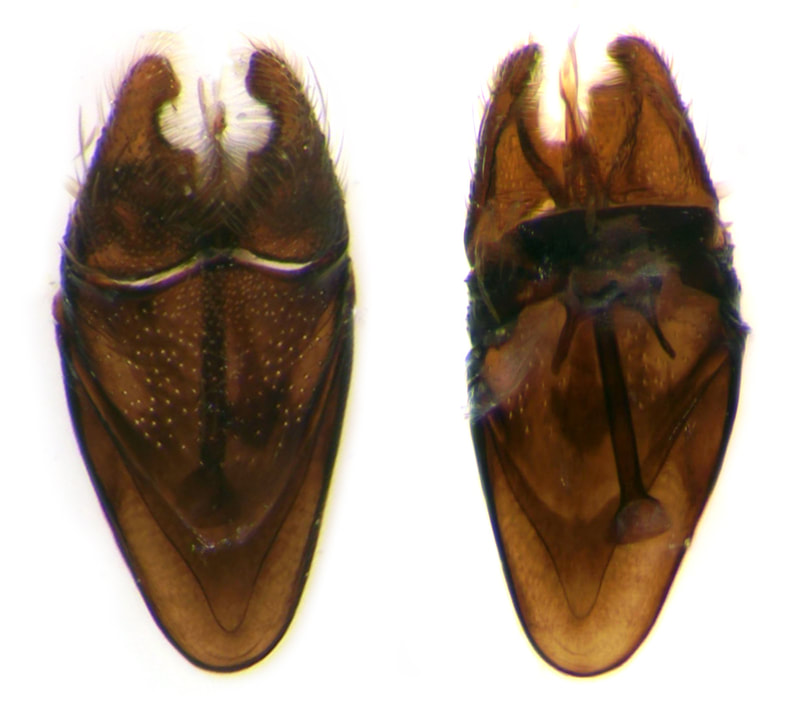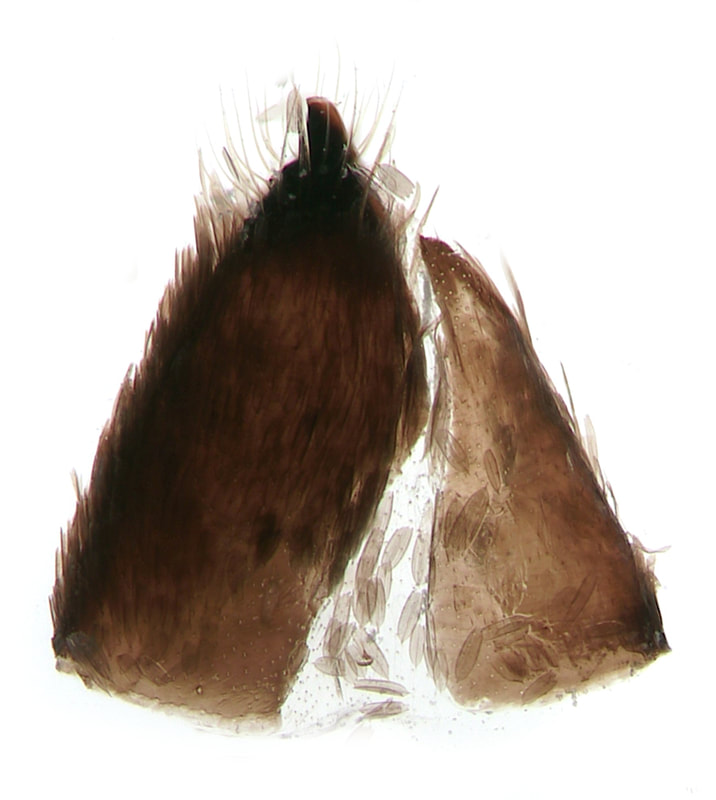07.006 Adela reaumurella (Green Longhorn)
ws: 14-18mm; May-Jun; common in deciduous woodland in England and Wales - swarm in sunshine around oak
ID: Maxillary palps rudimentary; fw without median fascia or black basal streak; ws 13mm+ > 4 species
According to key in MBGBI1 A.reaumurella is distinct from the other 3 species in having fw bronzy-green rather than bronzy-gold or coppery-bronze.
This on its own appears to be an unreliable distinction and certainly some of the images below appear to show a bronzy-gold forewing.
A.cuprella has a distinctive purple tinge along the costa and at the apex of the fw. The male antenna is entirely white with black scales on each segment vs black in the basal 1/4 and white in apical 3/4 in A.reaumurella. The female antenna is dark fuscous on the upperside, white on the underside and lacks the basal thickening of A.reaumurella.
Nemophora cupriacella: male has costa and apical 1/3 of fw bronzy-purple; female fw almost entirely suffused violet. N.metallica has a reddish purple costa in both sexes. Both Nemophora species fly later (Jun-July)
For further investigation: Are antennal differences more reliable than forewing differences in distinguishing these species?
Genitalia not illustrated in MBGBI1 and only A.reaumurella shown at Moth Dissection
According to key in MBGBI1 A.reaumurella is distinct from the other 3 species in having fw bronzy-green rather than bronzy-gold or coppery-bronze.
This on its own appears to be an unreliable distinction and certainly some of the images below appear to show a bronzy-gold forewing.
A.cuprella has a distinctive purple tinge along the costa and at the apex of the fw. The male antenna is entirely white with black scales on each segment vs black in the basal 1/4 and white in apical 3/4 in A.reaumurella. The female antenna is dark fuscous on the upperside, white on the underside and lacks the basal thickening of A.reaumurella.
Nemophora cupriacella: male has costa and apical 1/3 of fw bronzy-purple; female fw almost entirely suffused violet. N.metallica has a reddish purple costa in both sexes. Both Nemophora species fly later (Jun-July)
For further investigation: Are antennal differences more reliable than forewing differences in distinguishing these species?
Genitalia not illustrated in MBGBI1 and only A.reaumurella shown at Moth Dissection
Female genitalia
§1 Belfairs Woods, Essex, 25/04/2011; male
§2 Blean Woods, Kent, 22/04/2011; male
§3 Belfairs Woods, Essex; 25/04/2011; female
§4 Foulden Common, Norfolk; 23/05/2016; female; netted by day
§5 Pound Wood, Essex; 25/04/2019; male; fw 7.7mm; netted by day
§6 Pound Wood, Essex; 25/04/2019; male; fw 7.7mm; netted by day
§7 Warton Crags, Lancashire; 18/05/2021; female; fw 6.8mm; netted by day
All images © Chris Lewis
§2 Blean Woods, Kent, 22/04/2011; male
§3 Belfairs Woods, Essex; 25/04/2011; female
§4 Foulden Common, Norfolk; 23/05/2016; female; netted by day
§5 Pound Wood, Essex; 25/04/2019; male; fw 7.7mm; netted by day
§6 Pound Wood, Essex; 25/04/2019; male; fw 7.7mm; netted by day
§7 Warton Crags, Lancashire; 18/05/2021; female; fw 6.8mm; netted by day
All images © Chris Lewis
Page published May 2011 | §4 female genital image added 09/02/2017 | §5&6 added 06/01/2020 | §7 added 05/06/2021


